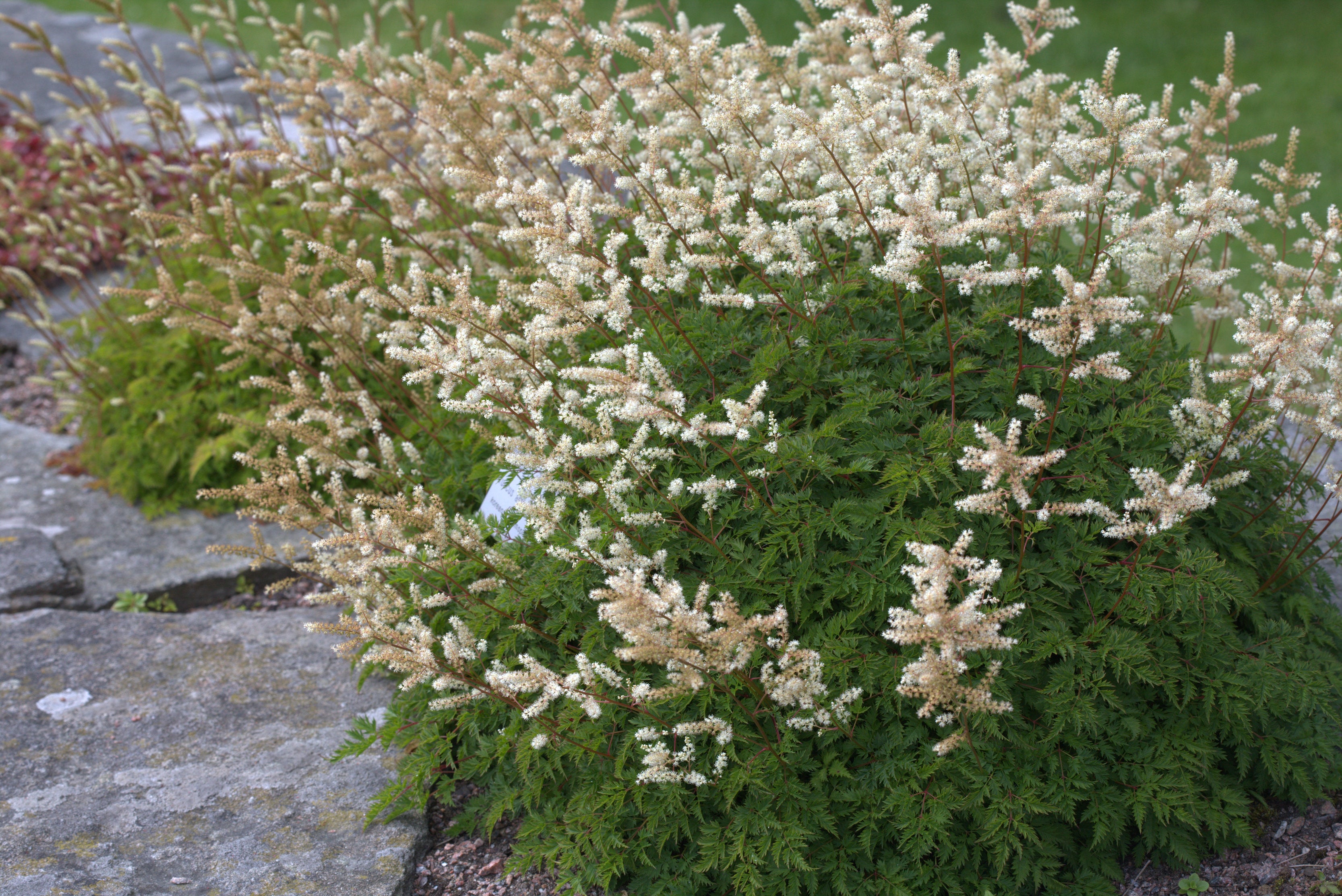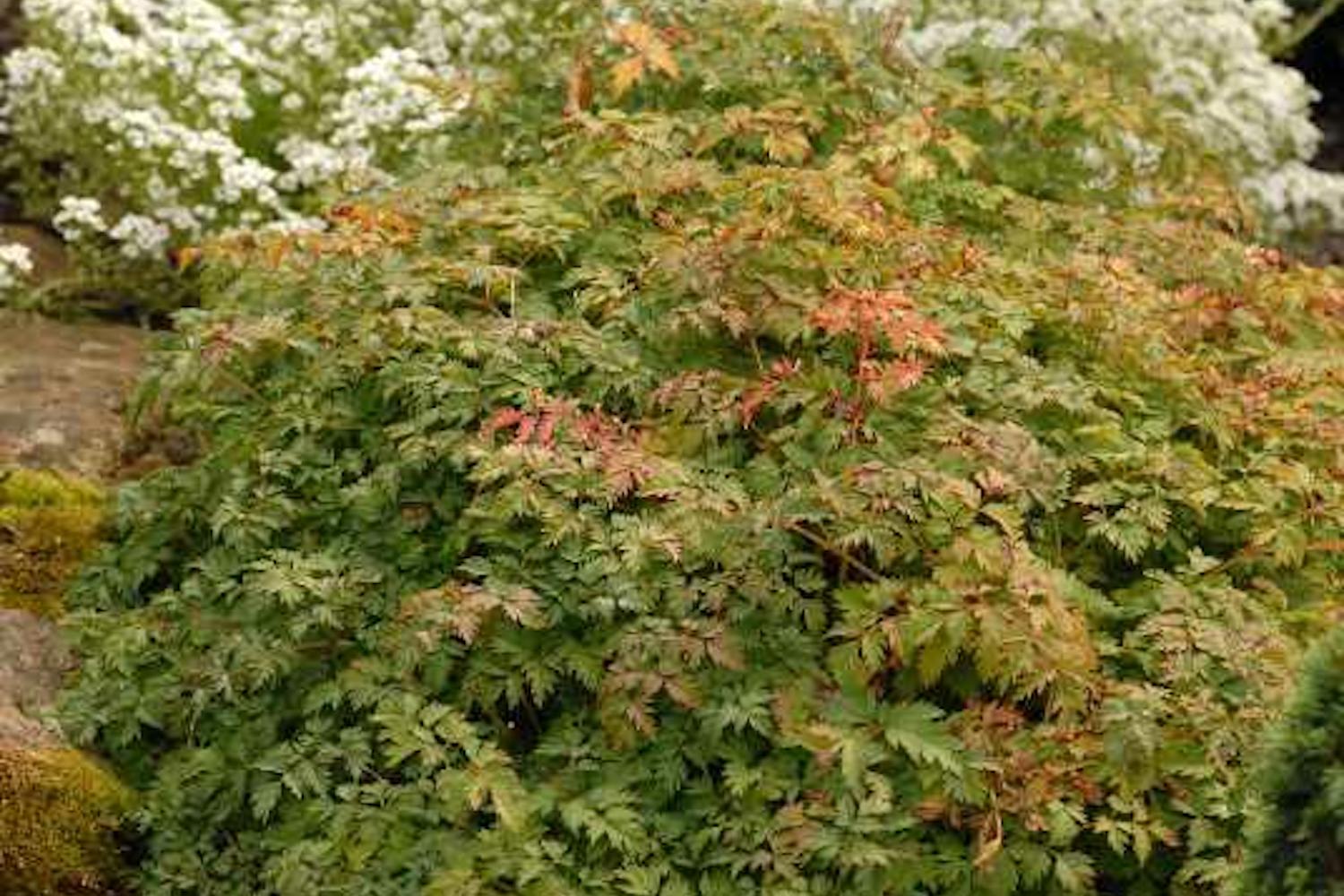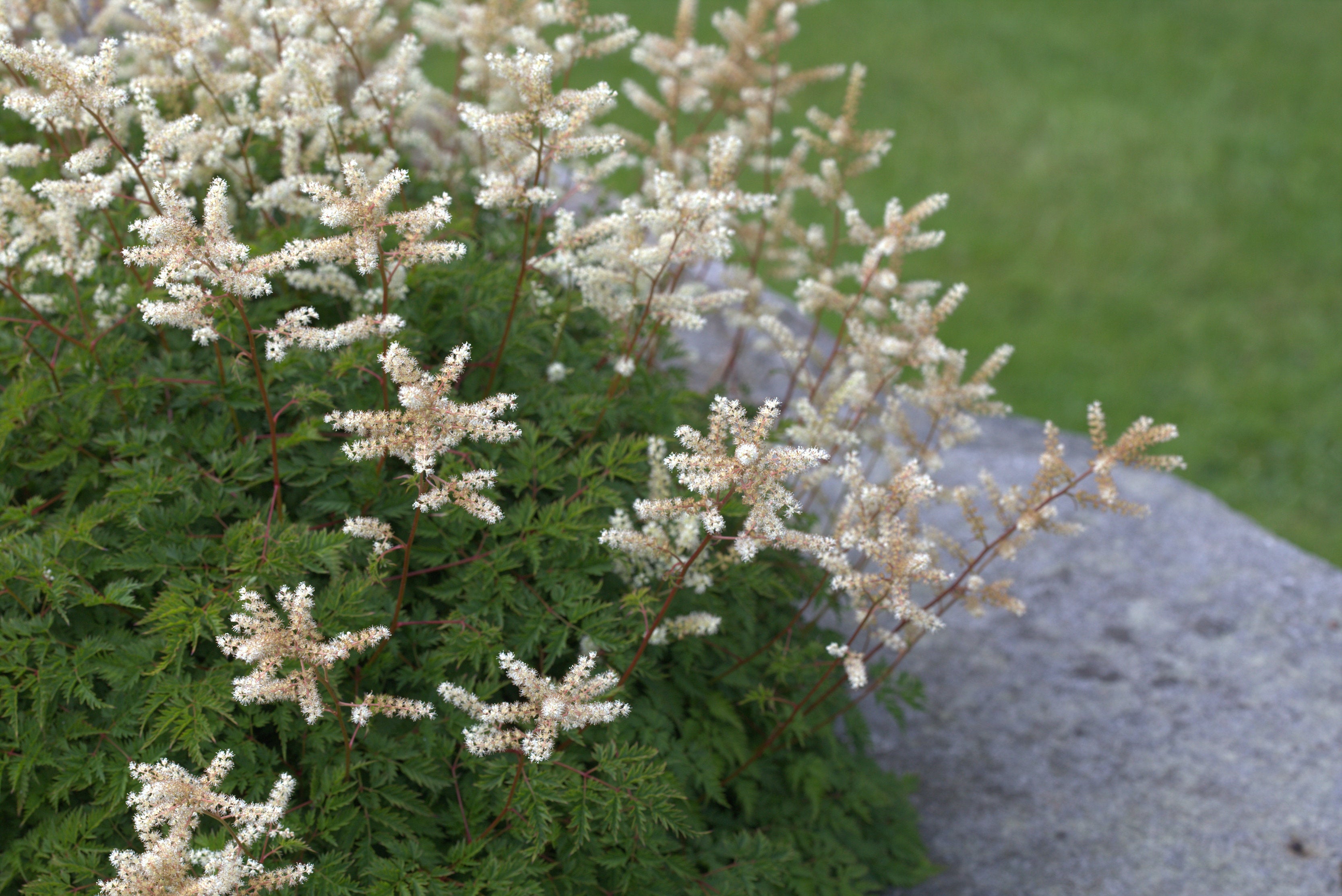Aruncus aethusifolius
Approx. 0.5 litre pot
About this cultivar:
Aruncus aethusifolius is a compact plant with branched sprays of tiny creamy-white flowers in early summer, resembling a miniature Astilbe. After the flowers dry out the fern-like, much-dissected leaves becoming lovely orange yellow in autumn.
Has Royal Horticultural Society Award of Garden Merit (RHS AGM). Commonly called dwarf goatsbeard or Korean goatsbeard, the epithet aethusifolius means Aethusa (fools-parsley)-leaved. Try in the shady part of a rock garden, tho is also likes wet.
- Position: Full sun, partial shade, full shade
- Soil: Almost any soil
-
Flowers: June, July, August - ornamental effect of the dried seed plumes afterwards
-
Other features: Royal Horticultural Society Award of Garden Merit (RHS AGM)
- Hardiness: H7 - Hardy in the severest European continental climates (< -20°C)
- Habit: Clump forming, bushy
- Foliage: Deciduous
- Height: 20 to 40 cm (0.75 - 1.5 ft)
- Spread: 30 to 60 cm (1 - 2 ft)
- Time to full growth: 2 to 5 years
- Plant type: Herbaceous Perennial
- Colour: White, green
- Goes well with: Carex, Hosta, Astilbe
About this genus:
Aruncus is a genus of clump forming herbaceous perennial plants in the Rose family (Rosaceae). They are closely related to the genera Filipendula and Spiraea, and are native to mountainous damp woodland in temperate regions of the Northern Hemisphere. The genus name is the classical Greek name for these plants.
The botanical opinion of the number of species differs, with from one to four species accepted. Aruncus dioicus (goatsbeard) occurs throughout the cooler parts of Europe, Asia and North America. In the broad sense, this is the only species in the genus, with the other species (aethusifolius, gombalanus, sylvester) treated as synonyms or varieties of it by some botanists.
Aruncus blooms in spring and summer with large clusters of tiny creamy white flowers in a feather-like inflorescence produced above veined and toothed leaflets. The flowers also make long-lasting cut flowers and dry well for arrangements. Many people compare Aruncus to the more colourful Astilbe as the two share a similar appearance and habitat. I find Aruncus plants have a finer, wispy texture that moves more in the breeze, giving a wilder feel.
Aruncus will grow almost anywhere that isn’t baked dry by sun. As its native habitat implies it does well in wet areas and pnat combinations that reflect that always look well – try Carex, Hostas, or even Astilbes.








